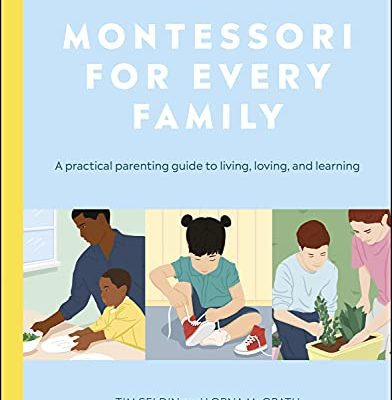
Disclaimer: I am not an attorney. The information in this article is based on publicly available sources and reflects my best understanding of current law and best practices. It should not be considered legal advice. For guidance on your school’s specific policies or employment situations, please consult a qualified attorney experienced in employment law and disability rights.
In schools built on the values of community, respect, and human development, inclusion isn’t just a checkbox—it’s a commitment. But when it comes to supporting neurodivergent adults—teachers, staff, and administrators alike—many school leaders aren’t sure how to proceed. This article explores what neurodivergence means in the workplace, what legal responsibilities may apply under U.S. law, and what practical steps schools can take to create a supportive environment for all members of their team.
What Does “Neurodivergent” Mean?
The term neurodivergent refers to individuals whose neurological development or cognitive functioning differs from the so-called “neurotypical” pattern. This includes—but isn’t limited to—those with:
-
Autism Spectrum Disorder (ASD)
-
Attention-Deficit/Hyperactivity Disorder (ADHD)
-
Dyslexia, dyscalculia, and other learning differences
-
Tourette’s Syndrome
-
Obsessive-Compulsive Disorder (OCD)
-
Sensory Processing Disorder
Neurodivergence isn’t something to be fixed—it’s a different way of processing, thinking, feeling, and interacting. Many neurodivergent individuals bring exceptional strengths to the workplace, such as deep focus, creativity, problem-solving, empathy, and innovative thinking.
Researchers estimate that 15–20% of the global population is neurodivergent, which means it’s not rare. Chances are high that your school already includes neurodivergent team members—whether they’ve disclosed it or not.
Understanding the Legal Landscape: The ADA and Workplace Rights
In the United States, the Americans with Disabilities Act (ADA) is the primary law that protects employees with disabilities, including many forms of neurodivergence. While interpretations can vary and specific applications depend on context, here are general principles that may apply to schools:
-
Reasonable accommodations must be offered to qualified employees with disabilities, unless doing so would cause undue hardship to the employer.
-
Employers are expected to engage in an “interactive process”—a collaborative discussion to determine what supports might help an employee succeed.
-
Discrimination, harassment, or adverse treatment of someone because of a disability—or because they requested accommodations—is prohibited.
It’s a common misconception that only visible or physical disabilities are protected. In fact, many cognitive and sensory conditions are covered when they substantially limit one or more major life activities, including concentration, communication, or learning.
Please note: These general principles are offered for informational purposes only. Always consult with legal counsel before developing policies or addressing specific employee concerns.
The Interactive Process: A Collaborative Conversation
When an employee discloses a neurodivergent condition or requests support, the school’s obligation typically includes engaging in a flexible, good-faith conversation to explore what’s needed. This is known as the interactive process.
Here’s what that process often looks like:
-
The conversation is private and respectful.
-
The goal is not to verify the diagnosis but to understand what would help the employee perform the job effectively.
-
Accommodations can be simple and inexpensive—such as flexible scheduling, task management tools, or alternative communication methods.
Example: A Montessori guide with ADHD may benefit from visual planning tools, a reduced number of required meetings, or reminders in writing after verbal updates. These supports may allow them to contribute more fully without burdening the team.
Creating a Culture of Inclusion (Not Just Compliance)
True inclusion goes beyond legal compliance. Neurodivergent employees often face subtle, unspoken barriers:
-
Sensory overwhelm from chaotic or loud environments
-
Misinterpretations of communication style (e.g., perceived rudeness or disinterest)
-
Pressure to “mask” or behave neurotypically
-
Fatigue from social navigation and unaccommodated challenges
As leaders, we can take proactive steps to ensure that our school environments are welcoming to a diversity of minds—not just personalities.
Practical Inclusion Strategies for Schools
| Strategy | Why It Helps |
|---|---|
| Share agendas in advance | Gives time to process and prepare |
| Offer alternative communication options | Supports different expressive styles |
| Designate quiet workspaces | Reduces sensory overload |
| Normalize individual work rhythms | Supports executive function differences |
| Check in privately and regularly | Builds trust and safety |
These steps don’t require policy overhauls. Often, small, thoughtful changes can have a profound impact.
Pitfalls to Avoid
Even well-intentioned leaders can make mistakes that undermine trust or violate legal protections. Some common pitfalls include:
-
Requiring a formal diagnosis before offering flexibility
-
Making assumptions about what someone “should” be able to do
-
Failing to maintain confidentiality
-
Dismissing or downplaying accommodation requests
-
Framing differences as performance issues without exploration
Instead of asking, “What’s wrong?”, shift the question to “What would help you thrive?”
Real-Life Insight
Consider the example of “Luis,” an Upper Elementary teacher who often appeared withdrawn during faculty meetings and missed internal deadlines. Once he felt safe disclosing his autism diagnosis, his school adjusted how feedback was delivered (written first, then discussed) and allowed him to work on long-term projects in a quieter space.
Within months, Luis’s performance soared—and so did his confidence. His classroom became one of the most calm, creative, and high-functioning in the school.
When people feel safe being themselves, they show up more fully—and your school community is better for it.
Why It Matters for Montessori and Independent Schools
Montessori principles call us to respect the individual, honor diversity, and cultivate human potential. These values apply not only to children—but also to the adults we work with every day.
By supporting neurodivergent educators and staff:
-
We reduce burnout and foster retention.
-
We model the inclusive values we teach.
-
We benefit from the unique gifts of each team member.
-
We create space for true belonging—not just “fitting in.”
Resources to Explore
If you’d like to learn more or begin reviewing your school’s practices, here are a few helpful starting points:
-
Job Accommodation Network (JAN) – https://askjan.org
A free resource with examples of accommodations and ADA guidance. -
Neurodiversity in the Workplace – https://ndworkplace.org
Focuses on recruiting and retaining neurodivergent talent. -
“Divergent Mind” by Jenara Nerenberg
A powerful look at adult neurodivergence, especially among women. -
The Neurodivergent Teacher (blog & social media)
Real-life insights from an educator who shares her journey with ADHD and autism.
Final Thoughts
At their best, schools are communities where people grow—not just students, but adults as well. As leaders, our responsibility is not to mold everyone into the same shape, but to create an environment where different minds can flourish.
Neurodivergent team members have always been in our schools. Let’s be the kind of leaders who see them, support them, and value what they bring.
Inclusion isn’t charity. It’s wisdom.








